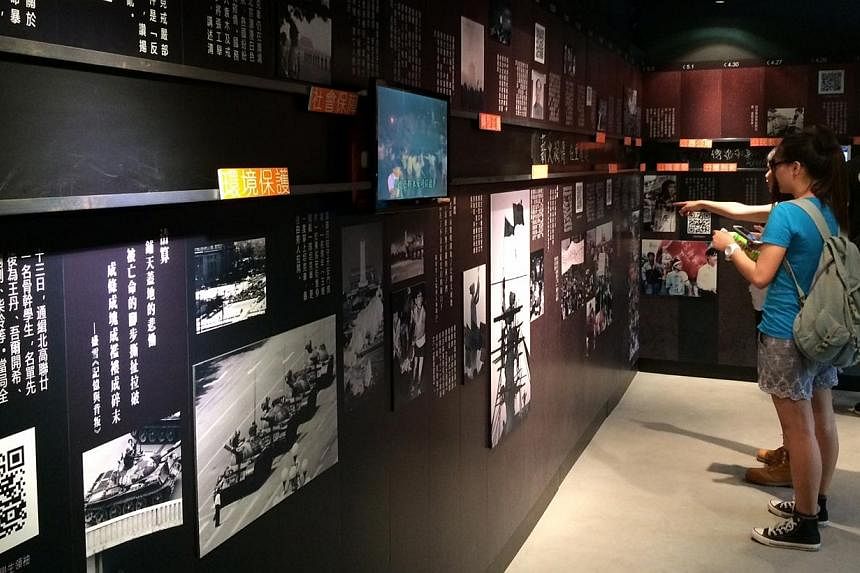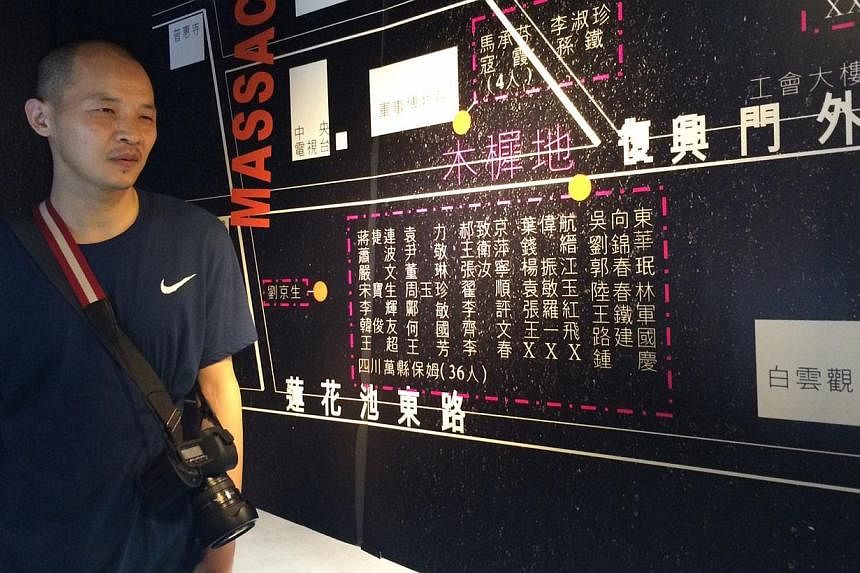His face taut with tension, Shanghai photographer Wei Yingjun watches the flickering images of the 1989 tumult in Beijing on a television screen in a small, dark space in Tsim Sha Tsui.
As the reel rattles to an end, the 35-year-old says: "We Chinese should all know about this. How can we dismiss it and just pretend this never happened?"
Making sure that people, especially those in mainland China where the subject remains shrouded in taboo and indifference, know what happened is the idea behind the first museum dedicated to the Tiananmen Incident.
It opened here in April, on the fifth floor of a nondescript commercial building in east Tsim Sha Tsui. And though it is more than a skip and a hop away from the popular brand name stores in the adjacent shopping district, the hope is that some of the mainland tourists who visit Hong Kong will find their way there. Last year, they numbered 40 million.
In the 800 sq ft museum, there is a chronological display of photographs and write-ups of the seven-week movement, spliced by a blackboard for visitors to chalk their thoughts. A visiting Hong Kong student scribbles in traditional Chinese: "Never forget!"
There are also newspaper clippings and videos, including interviews with the Tiananmen Mothers, who had lost their children or relatives in the crackdown. A replica of the iconic Goddess of Democracy statue that protesters had erected in Tiananmen Square marks the end of the exhibition.
But probably the most intriguing items are the USB thumb drives sold at the gift counter. They contain a treasure trove of articles, pictures and also songs that were sung during the protest.
Museum organisers hope that mainland visitors will buy these to bring back to the mainland, where the information can be disseminated the information.
Mr Lee Cheuk Yan, chairman of the Hong Kong Alliance in Support of Patriotic Democratic Movements in China, who opened the museum, says: "This is part of our efforts to keep the memory alive."
The museum was funded by donations and opened at a cost of HK$6 million (S$1 million), with the bulk used as downpayment for the unit in Foo Hoo Centre.
It sees about 200 visitors on weekdays and 500 on weekends. Of these, about half are from the mainland, 30 per cent from Hong Kong and the rest are foreigners, say staff member Johnny Li, 33.
"Some of the mainland visitors cry when they see what happened back then," he adds.
But the museum also has its detractors, who say it failed to remain neutral and take into account Beijing's official narrative, which is that the students were engaged in a counter-revolutionary rebellion, recounts Mr Li.
Meanwhile, the Foo Hoo Centre owners' committee has filed a writ claiming breach of property deeds. In a letter sent by its lawyers, the committee said it was concerned the museum would "operate as a lightning rod and attract… an inordinate number of visitors, both supporters and detractors, as well as reporters, police and members of the curious public etc".
The High Court last week allowed the museum's application for a delayed submission.




